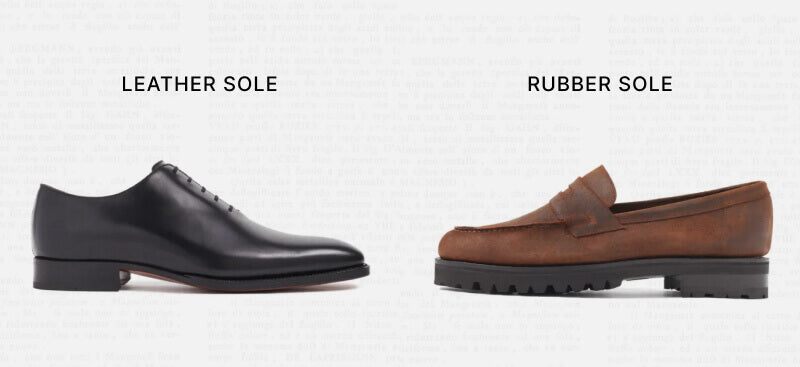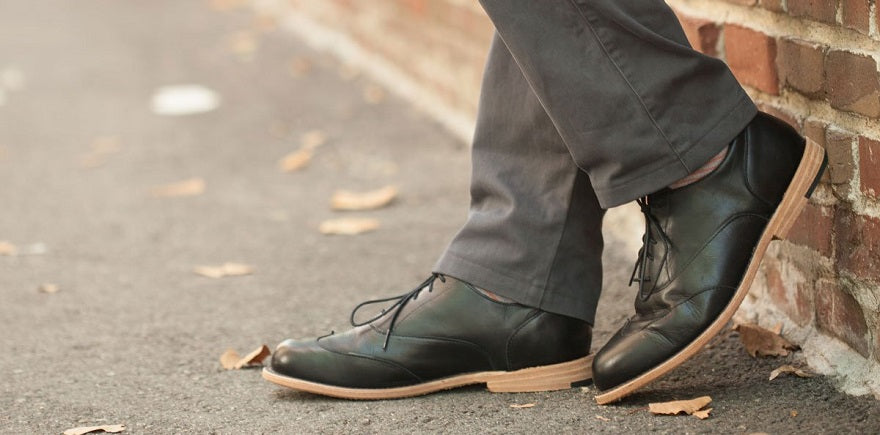Dress shoes don’t have tread to maintain a sleek and formal appearance. The absence of tread helps to prevent slipping and offers a polished, professional look.
When it comes to formal footwear, the absence of tread on dress shoes is a deliberate design choice. The smooth sole enhances the elegant aesthetic and ensures a refined, sophisticated appearance. This feature is particularly important for formal events and professional settings where a polished look is essential.
By prioritizing style and safety, dress shoes without tread offer both a fashionable and functional choice for formal attire. The smooth sole also allows for effortless movement and graceful strides, contributing to an overall sophisticated and put-together look.

Credit: www.cobbler-union.com
Style Over Function
Sleek Design
Despite the lack of tread, dress shoes prioritize sleek design for a polished appearance.
Sophistication
Dress shoes exude an air of sophistication, enhancing the overall elegance of an outfit.
Formal Occasions
These shoes are perfect for formal occasions where style and sophistication are key.

Credit: treadlabs.com
The Science Behind Tread
When it comes to dress shoes, you may have noticed that they often lack the tread found on athletic or casual shoes. This absence of tread raises the question: why don’t dress shoes have tread? The answer lies in the science behind tread and its purpose in footwear design.
Purpose Of Tread
Dress shoes, unlike athletic or casual shoes, are designed primarily for formal or professional occasions. As such, their sleek and polished appearance is essential. The absence of tread on dress shoes serves to maintain the shoe’s elegant aesthetic, ensuring a clean and refined look.
Traction On Different Surfaces
While dress shoes lack prominent tread, they still provide traction on various surfaces. The outsoles of dress shoes are often made from materials such as leather, rubber, or synthetic compounds, which offer sufficient grip on smooth indoor surfaces and moderately textured outdoor terrains.
Exceptions To The Rule
While most dress shoes are known for their lack of tread, there are a few exceptions to this rule. These exceptions cater to individuals who may require more traction or have specific footwear needs in certain environments.
Dress Shoes With Tread
Some dress shoes are designed with minimal tread patterns to provide better grip and stability. These shoes are often suitable for individuals who frequently navigate slippery surfaces or require more support during prolonged periods of standing or walking.
Casual Dress Shoes
Casual dress shoes, such as loafers or derby shoes, may feature subtle tread patterns to enhance traction while maintaining a sophisticated appearance. These styles offer a blend of formal and casual elements, making them suitable for a variety of occasions.

Credit: www.ebay.com
Caring For Dress Shoes
Dress shoes don’t have tread to maintain their sleek appearance, but it makes them slippery on smooth surfaces. Proper care includes using a rubber sole protector and avoiding wet conditions to prevent damage.
Proper Storage
Store dress shoes in a cool, dry place away from direct sunlight. Keep them in a shoe tree to maintain shape.
Cleaning And Polishing
Regularly wipe shoes with a damp cloth to remove dirt. Use a quality shoe polish to maintain their shine.
Frequently Asked Questions
Why Do Some Dress Shoes Have No Grip?
Dress shoes may lack grip due to smooth soles for a formal look, which can be slippery.
How To Add Traction To Dress Shoes?
You can add traction to dress shoes by attaching stick-on sole grips or getting them resoled with rubber. Additionally, using a rough sandpaper to scuff the soles can also improve traction. Regularly cleaning the soles can help maintain traction.
Why Are Men’s Dress Shoes So Uncomfortable?
Men’s dress shoes can be uncomfortable due to stiff materials, narrow designs, and lack of cushioning.
Why Cut The Bottom Of Dress Shoes?
Cutting the bottom of dress shoes helps improve traction and prevent slipping. It also allows for better flexibility and comfort.
Conclusion
Ultimately, the absence of tread on dress shoes is a deliberate design choice. It enhances the shoe’s sleek appearance while maintaining traction on flat surfaces. Understanding the rationale behind this feature adds a new perspective to the artistry and functionality of dress shoes.
Embrace the elegance and purpose of tread-less dress shoes.


